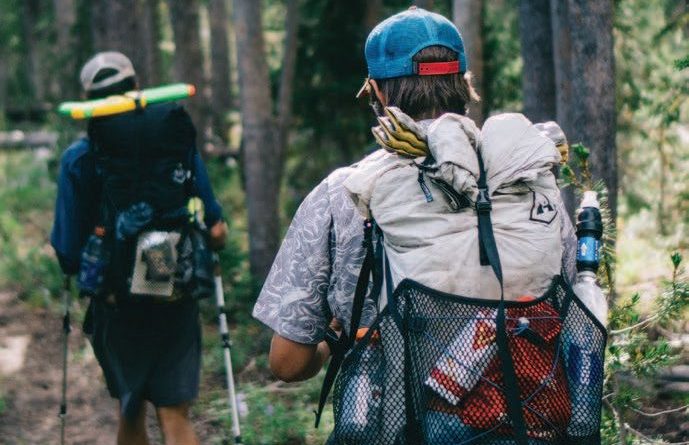Backpacks: An Owner’s Manual
Understanding suspension and construction is key to finding the right fit—and proper maintenance and repair will ensure your load-hauler lasts thousands of miles.

The Pack Expert
Kevin Rosenberg started peddling gear on the sidewalks of Brooklyn in 2009 and eventually grew his business, Gear to Go Outfitters, into a rental, guiding, and retail company, which is now based in Buchanan, New York. He’s a self-proclaimed pack geek known to stop people on the trail to offer fit and adjustment advice.
How to Buy a Backpack: Ask the Right Questions
What’s my organization style? Are you a stuffer or a neatnik? The former might prefer a big, single-compartment packbag, and the latter, pockets galore. Pick a pack layout that matches your MO or you’ll forever fight your own nature.
What size am I? Pack size is based on torso length, not height. Here’s how to measure: Run a flexible tape measure (or a string) from the bony C7 vertebrae at the base of your neck to the point right between the tops of your hipbones, or iliac crests. When trying on packs, learn how to adjust them yourself.
How big of a pack do I need? Bring your kit into the store or grab stuff off the shelf to make sure your prospective purchase can take the load. You can get away with a 45-liter pack for fair-weather weekends, but consider sizing up to 60-plus if you plan
to do some winter camping or take longer trips.
What kind of suspension? Opt for sturdy aluminum or sprung-steel suspension systems over ultralight or plastic-only models—unless you plan to keep your total pack weight (including food, water, and fuel) under about 25 pounds.
How does it compare to similar models? Don’t leave the store before you’ve tried on several packs. Fill each with about 20 pounds and take a few laps.
Anatomy of a Backpack
Different packs suit different trips. Learn your way around your pack’s features. (Too small to read? Click the image to view the full-size version.)

A Word About Ultralight Packs
“A lot of non-ultralight people go for ultralight packs,” Rosenberg says. “Find something that fits well and carries well. If you just go for the lightest pack possible but you put 45 pounds in it, you’re going to end up with a back injury.” Whittle down your kit before you start trying to cut pounds off your pack.
Backpack Owner’s Manual
Pack smart. Store heavy stuff in the high center of your pack, near your spine. Keep snacks, raingear, and essentials handy, and avoid lashing items to the outside; they’re easy to lose, and affect your balance.
Sleep tight. Keep your pack in the tent with you (remove all smellables first) or hang it up to prevent nibbling by rodents attracted to the salt in sweaty shoulder straps.
Reinforce weak spots. Give your pack a once-over before a big trip. Preemptively patch fuzzy or threadbare sections.
Basic Backpack Repair
Boulder Mountain Repair has seen packs busted in just about every way you can think of (and probably some you can’t). BMR Product Developer Sam Goodhue shares some of the most common equipment failures and his advice for fixing them.
Worn-out zipper slider: Tighten the slider body by squeezing the top and bottom together with pliers. Replace when you get home.
Broken zipper: Coil-style zipper? Gently realign bent teeth with your fingernails. Tooth-style zipper? Get it replaced.
Torn mesh pocket: Overlap the edges of the tear and sew them together. Permanent solution? Replace the whole panel.
Broken buckle: You’ll need a replacement. Carry an extra hipbelt buckle in your repair kit, especially if your straps are too short to tie.
Gear Shop Etiquette
No surprise: Your local outfitter, like many brick-and-mortar stores, is likely challenged by online competition. It’s not your job to fix their business model, but don’t abuse it either. If you go into a shop and spend an hour getting fitted by a pack expert, don’t turn around and buy the pack on the web.
Originally posted 2018-03-15 13:43:36.

